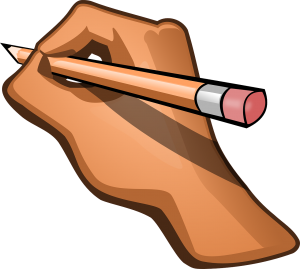-
FYC Goals: From Theory to Application

From Theory to Application . . . The pendulum is swinging, and with each tick of the clock, I find myself getting closer and closer to that first moment of comprehension — the one where I face twenty-six incoming freshman students that are as apprehensive of taking a writing course as I am teaching it for the first time. Did I design my curriculum to best meet the needs of my students? Are my learning outcomes in line with the course objectives? Are my assignment guidelines structured in a format that facilitates both clarity and cohesiveness? Is the sequencing and scaffolding design of the semester’s assignments logically chronological? As Teresa Redd references, “Talkin bout Fire Don’t Boil the Pot” (146). In other words, studying composition pedagogy may prepare me for understanding the needs of students, and may offer direction on how to best design the course, but all of this does not TEACH the students WRITING; hence, this is where the professor’s role comes into play.
After months of trying to absorb as much as I can researching different theoretical pedagogical perspectives, I now begin the process of mapping out assignments while considering the fundamental takeaways I feel are most critical to incorporate. Several takeaways stand out to me in the readings for this week and are highlighted below:

Audience Matters . . . Diversity in Writing. - Diversity in writing – “To develop students’ rhetorical knowledge and sense of authorship so that they can adapt writing to different purposes, audiences, and contexts” (Redd 147).
Coming from an occupational field outside of academia, I genuinely understand the need for students to be able to transfer writing skills from an academic to an applied setting. Learning how to write for audiences outside of the college classroom is something all students should be exposed to. Upon graduation, students may be tasked with various genres of writing: professional emails, corporate marketing, newspaper articles, social media postings, and for some, creative writing.

Writing for knowledge . . . - We write to learn – “ . . . writing enables us to think in ways that are virtually impossible without writing because we can reflect upon our thoughts more easily when we can see and preserve them” (Redd 148).
I have seen this scenario play out daily while working in the KSU writing center. Sometimes, students will come into the writing center and feel overwhelmed by the task at hand. In this situation, after carefully reviewing the professor’s assignment guidelines, I will begin the freewriting and/or brainstorming process. Often times, students will start to develop a structure or pattern based solely upon what they have written in these brainstorming sessions. I associate this process directly with “we write to learn” — we don’t know what we know until we write it. Furthermore, students recognize the fact they DO know something about what they would like to write.

Identifying your process is key . . . - Writing is a process – “We cannot truly teach writing without teaching the process of writing, for it is the development of flexible processes that will enable students to fulfill the wide range of writing tasks they will encounter in the university and beyond” (Redd 149).
As I have previously discussed in one of my recent blog posts, I believe teaching the processes of writing is very paramount in students’ success of not just freshman-level English composition, but I believe it is fundamental in helping students write BEYOND the current assignment. I met with a student just yesterday that has always enjoyed writing and has had great success in writing. For some reason, the current assignment was overwhelming them to the point they had writer’s block. I immediately began talking to the student to try and identify “processes” they had relied upon and typically used throughout the years that had seemed to work. Within a matter of a few moments, the student was writing again, which wasn’t due to anything I said other than encouraging them to draw upon their “processes.”

Genres of Writing . . . - Understanding different genres of writing – “Conventions make it easier for readers to comprehend a text, in large part because conventions fulfill readers’ expectations” (Redd 150).
Not only do students need exposure to writing across different genres for various types of audiences, but they also need to learn and understand the concept of genres and why they exist. For example, the characteristics of a personal email are quite different compared to the audiences’ expectations of a professional email. For one, professional emails typically require the writer to formally introduce themselves, persuade or inform their audience of a specific event/need, and request a call to action. Usually, none of those characteristics mentioned above would need to be included in a personal email. If students haven’t been introduced to various genres of writing, they won’t understand the needs and expectations of writing within those specific spaces.

Multimodality in Writing . . . - Multimodal writing – “To be truly literate, students need to choose appropriate technology for their role, purpose, and audience . . . At the same time, students need to incorporate technology to save time, paper, and energy” (Redd 151).
Multimodal writing is prevalent in today’s society, and I suspect it isn’t disappearing any time soon. If anything, it is here to stay. Understanding the prescriptive guidelines in multimodal writing and expression will help students identify and align with their intended audiences. For example, having students write a research essay on a topic of choice teaches and reinforces field research. Once the essay is completed, professors could have students compose a multimodal assignment (blog post, travel brochure, etc.) incorporating the same research as incorporated into the essay. This type of assignment would aid students in understanding how the same information can be presented in a multimodal and multidimensional environment.
Works Cited
Altmann, Gerd. Pixabay, 2020, pixabay.com/illustrations/tutor-coach-teacher-manager-407361/.
Altmann, Gerd. Pixabay, 2020, pixabay.com/illustrations/puzzle-planning-strategy-process-1686920/.
Altmann, Gerd. Pixabay, 2020, pixabay.com/illustrations/social-social-media-communication-3064515/.
Free-Photos. Pixabay, 2020, pixabay.com/photos/audience-crowd-people-persons-828584/.
Iqbal, Mudassar. Pixabay, 2020, pixabay.com/illustrations/webdesign-design-web-website-3411373/.
OpenClipart-Vectors. Pixabay, 2020, pixabay.com/vectors/hand-pencil-pen-edit-eraser-write-160538/.
Reed, Teresa. “Talkin bout Fire Don’t Boil the Pot: Putting Theory into Practice in a First-Year Writing Course at an HBCU.” First-Year Composition: From Theory to Practice, edited by Coxwell-Teague, Deborah and Ronald F. Lunsford, Parlor Press, 2014, pp. 146-166.
-
Interactive Compositional Classrooms

Active Learning One of the courses I am taking this semester focuses on compositional pedagogy in high school and college settings. As I prepare to enter an English 1101 classroom next fall as part of my graduate-level training, I am beginning to strengthen and hone in on my philosophical approach. Each week consists of required readings and analysis of those readings to include “takeaways.” As a student, sometimes it seems like an over-abundance of information while searching for the needle in a haystack, so to speak, or rather, the fundamental components of classroom pedagogy that resonate in some way with one’s perceived educational platform. However, that moment when you read something that seems to vibrate on a frequency so profound that you want to shout with excitement, is, well, EXCITING!

Discovering Your Frequency Chris M. Anson’s discussion found in chapter one of First-Year Composition: From Theory to Practice is one such piece for me. Anson discusses a pedagogical approach known as WAW (Writing About Writing – see video below), which defines and addresses writing as a process. Following the WAW approach, the focus is less about the ability to write and more “ . . . on thinking about the thinking that writing involves . . .” Anson further states, “Developing ‘mindfulness’ and meta-cognitive awareness becomes one of the most important aims . . .” (5).
Wardle and Downs (WAW) Any many of you know, last semester involved studying Adler-Kassner and Wardle’s threshold concepts from Naming What We Know, specifically, threshold concept five: Writing is (Also Always) a Cognitive Activity. As I read through Anson’s excerpt, I found myself shaking my head, yes! over and over. Anson structures his classroom to feature “extensive, low-stakes and reflective writings” (6). This process of giving students many opportunities to participate in “low-stakes” writing is something I most definitely want to incorporate in the classroom. I feel as though “de-stigmatizing” the process of writing is essential for students to become comfortable with approaching writing as a process —not something that is easy for those that enjoy writing but a process that writers of all levels can use to develop the skill.
I believe just about every college student has experienced the “PowerPoint lecture” classroom design that seems to go on for eternity. No matter how awake you may feel or how artistically designed the presentation may be, the lights dim, and the eyes get heavy. The advancement of classroom technology and the emergence of digital course discussion boards demand a change in how the class time is structured. When I read Anson’s “course delivery reversal” (CDR) (10) design, I wanted to jump up and down. Instead of professors spending the entire class period lecturing in front of the students, Anson takes an interactive approach. Presentations can be posted to the online digital boards, and students then have the opportunity to engage, discuss, and learn through interactive projects. My goal is to incorporate this same type of pedagogy in my English composition classroom. Since writing is known to be a social and rhetorical activity, the more time students spend conversing, the more enhanced the process of writing will become. Below is a video where Anson discusses the importance of this concept in regards to interaction between teachers and students in the field of writing.
Chris Anson – 2013 CCCC Convention Interview Works Cited
Adler-Kassner, Linda, and Elizabeth Wardle, editors. Naming What We Know: Threshold Concepts of Writing Studies, Classroom Edition. Utah State University Press, 2016.
Anson, Chris M. “Writing, Language, and Literacy.” First-Year Composition: From Theory to Practice, edited by Coxwell-Teague, Deborah and Ronald F. Lunsford, Parlor Press, 2014, pp. 3-19.
“Chris Anson – 2013 CCCC Convention Interview.” YouTube, uploaded by NCTEvideo, 19 March 2013, youtube.com/watch?v=Bd12JROKWJ4.
Clker-Free-Vector-Images. Pixabay, 2020, pixabay.com/vectors/teachers-meeting-books-reading-23820/.
Coxwell-Teague, Deborah, and Ronald F. Lunsford, editors. First-Year Composition: From Theory to Practice. Parlor Press, 2014.
Geralt. Pixabay, 2020, pixabay.com/illustrations/banner-header-person-silhouette-997373/.
“Meet the Authors of Writing About Writing.” YouTube, uploaded by Macmillan Learning, 1 November 2014, youtube.com/watch?v=UDyPE2IMD68.